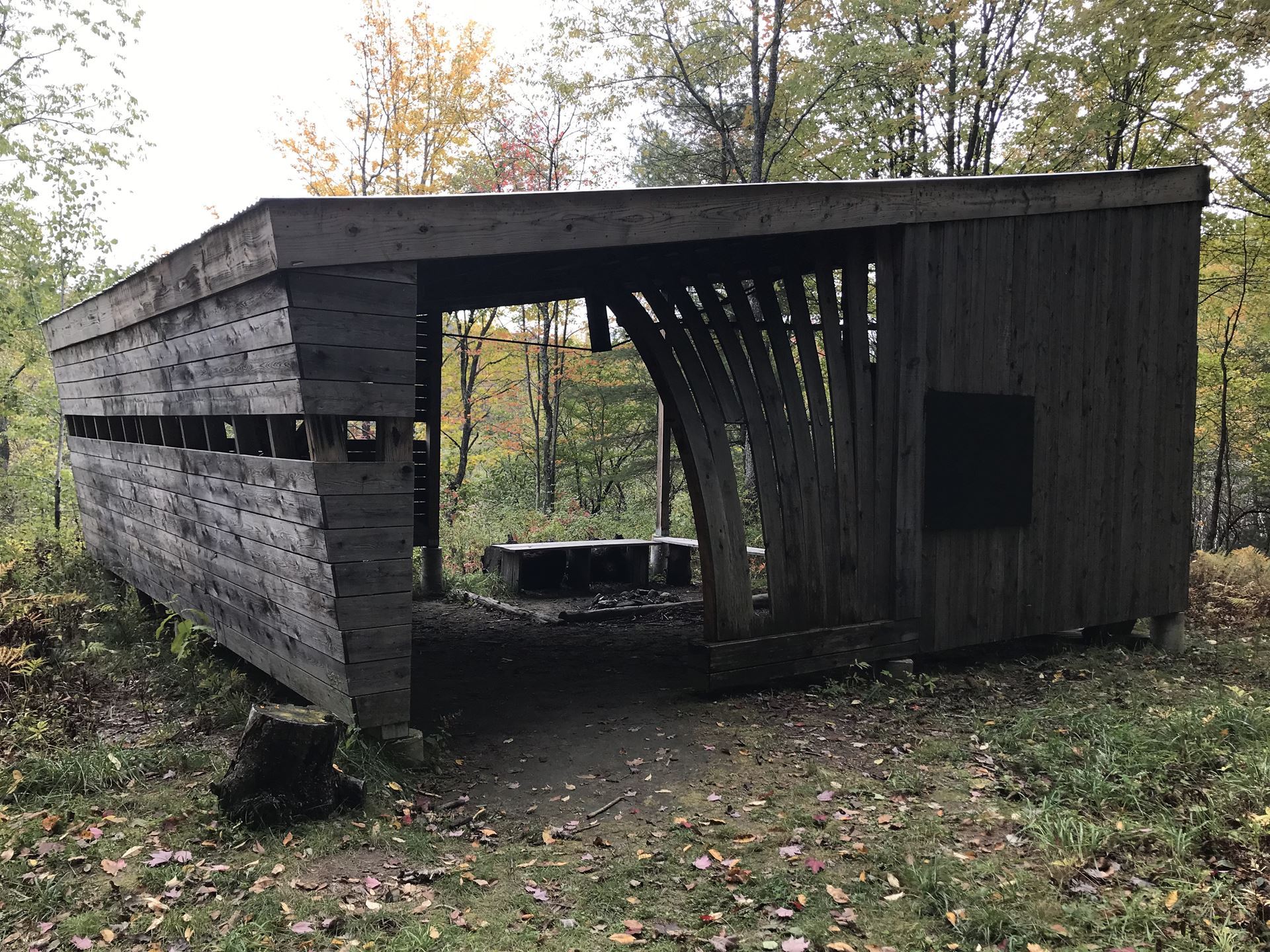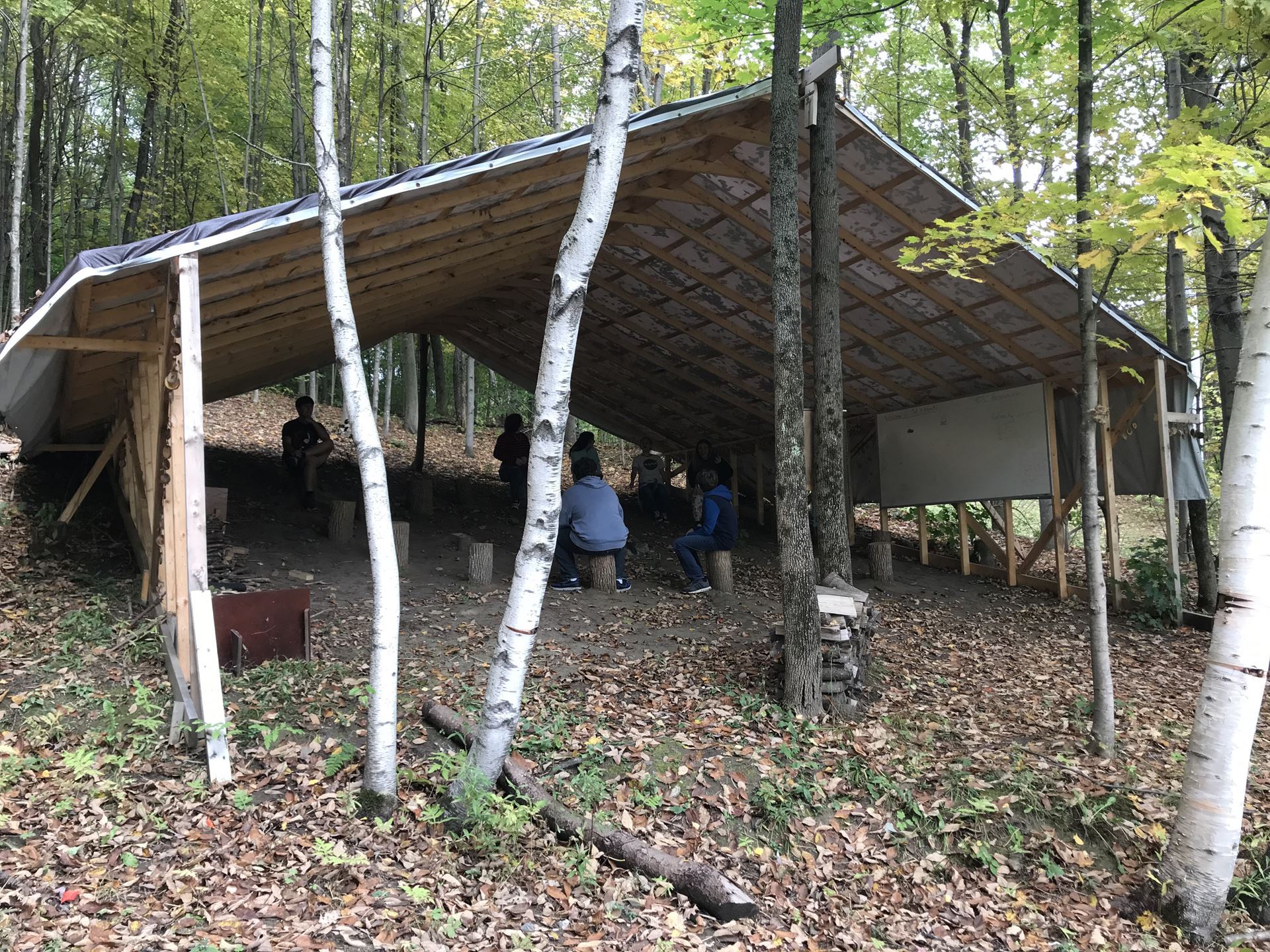When the pandemic forced schools to pivot to online learning in March of 2020, teachers and students were thrust into an unfamiliar and less-than-ideal learning environment. We all muddled through the end of the school year; teachers working hard to provide some semblance of a “normal” school experience to students who appeared (when they did) as a sea of icons or initials on a screen. As Vermont schools were given the go-ahead to return in person in the fall of 2020, districts scrambled to meet the health and safety stipulations handed down by the state while bringing large amounts of students back on campus. Across the state, using an outdoor classroom model seemed to be a viable solution to maximizing the amount of students returning for in-person learning.
Many schools in Vermont, from elementary to middle to high school, are lucky to already have an established outdoor classroom facility – a pavilion or covered structure, a natural amphitheater, a courtyard with tables - these spaces are often designed with a single class in mind, or may function as just an outdoor cafeteria space. In an effort to accommodate many more classes taking advantage of outdoor learning spaces, many schools began acquiring event tents and pop-up style canopy tents. A tour of rural campuses around the state might give the illusion that we were embarking on a school-year, state-wide flea market. White event tents and blue pop-ups dotted campuses; picnic tables and camp chairs replaced desks.

At Northfield Middle High School and Elementary School, giant tarps were erected in the school forest to provide cover, and stumps were cut for seats, as teachers planned for their classes to meet outside. The outdoor classroom structure, also located in the school forest, was on heavy rotation by multiple grade levels. Departments in the middle/high school all creatively claimed outdoor spaces close to the building and students became quite adept at quickly putting up the pop-up tents we had bought to provide some cover from the sun or light rain. The sidewalks and parking lots around both schools were (and still are) covered with spray-paint dots, six feet apart to provide students with safe spaces to place their camp chairs. In my physics class, one of the students’ first labs reviewing measurements was to estimate tarp sizes needed to cover several outdoor spaces adjacent to the science wing and humanities wing, as well as come up with a creative means for installing them.
Teachers who may otherwise have been reluctant to bring their students outside found creative ways to deliver instruction. Students eased into the idea that a camp chair served the same purpose as a desk chair, and realized the advantage to bringing a hat and sunglasses to school each day. Throughout the school year, when the weather was amenable to it, many classes spent much more time outside than in previous years.
For as much as these options provided a temporary solution and gave many Vermont schools a chance to broaden the idea of what a classroom can be, they haven’t always been ideal. Schools and districts dropped a lot of money on tents and tarps, some of which didn’t function as desired for as long as they needed to. Adding sides to event tents may have kept out the elements, but with a group of 18-20 teenage bodies, they were apt to get quite stuffy quite quickly. With Vermont’s ever-changing “wait five minutes” weather, it was not always practical for classes to be outside under a tent. Anyone who has had the misfortune of attending a party in a tent on a rainy day knows that the sound of rain is a distraction to any conversation, let alone to a lesson being delivered. Camp chairs and plastic chairs, conveniently bought in bulk for a low, school-friendly price point, often become broken – even under typical use. The pop-up tents we merrily used on a weekly basis in the fall and spring last school year sit bundled in the corner of several hallways and unused classrooms this year. The camp chairs issued to every student last fall are scattered around campus, if they weren’t taken home by students or tossed out because they were broken. And some teachers who were willing to venture out last year haven’t made so much as an effort to consider bringing their classes outside this fall.

Schools are constantly looking at ways to get creative with classroom spaces, to provide students with options for learning environments, and to break away from a traditional model dating back decades, if not centuries. Last school year showed us that the outdoors is a viable classroom space, but needs to be structured with purpose. Vermont schools, like other northeast states, do need to be considerate of limited weather windows that will allow for students to comfortably be outside. Event tents may be a good solution, so long as they are good quality and set up in locations that are easy to access for teachers, and tables and chairs are durable enough for regular use by the typical student. Permanent structures, like pavilions, can offer longer-term use at a higher cost. So long as districts value the benefit of the outdoors as a worthwhile learning space, investing in accessible, quality outdoor classrooms is something to be considered beyond just the pandemic.
Written by board member Meg Lyons
